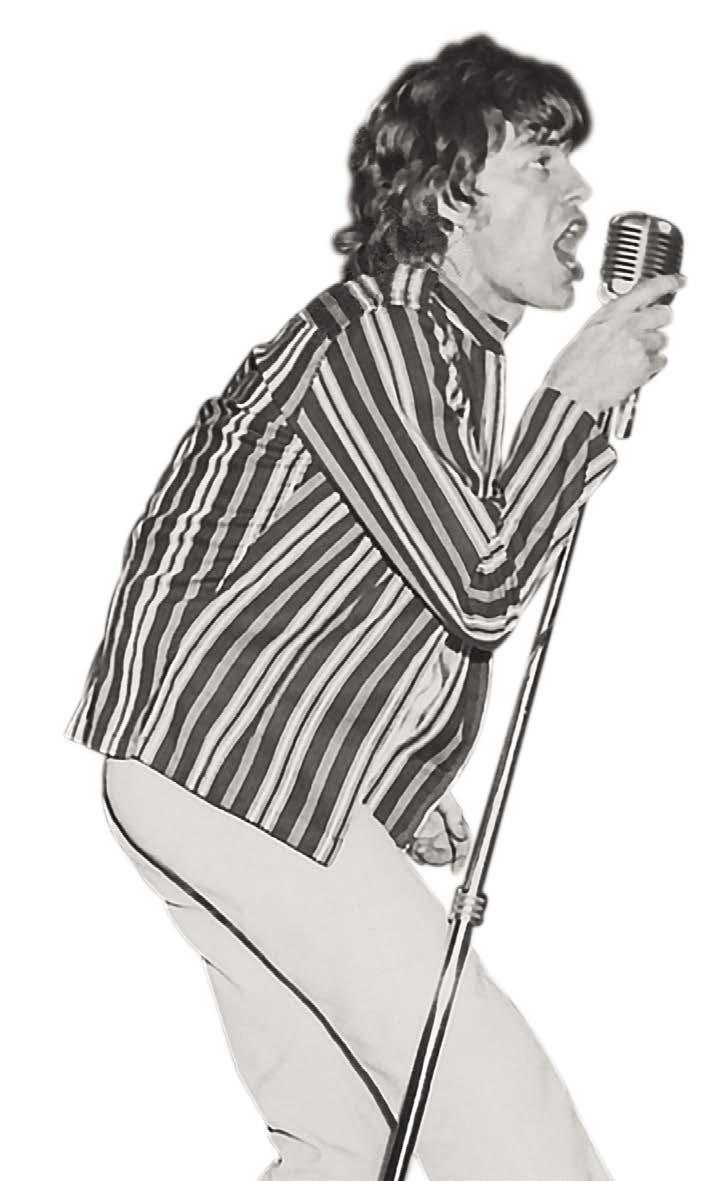
3 minute read
Timeline
“We were four clowns, really, who play instruments,” said Ringo Starr, shown in 2003.
Photo by Kathy Voglesong
The Rolling Stones
The wisdom then and now is that the Beatles wore the white hats, and the Stones wore the black hats. This has served the Stones well.
In 1963, when David Bowie was 16, he went to see a Little Richard show in England. Opening were the Rolling Stones.
“They weren’t very well known,” Bowie told TV host Michael Parkinson in 2002. “There’s about six kids rushed to the front. You know, that was their fan base at the time. Everybody was there for Little Richard. And it was priceless; I’d never seen anything so rebellious in my life. Some guy yells out, ‘Get yer hair cut!’ And Mick (Jagger) says — and I’ll never forget these words — ‘Wot, an’ look like yew?’
“I thought, ‘Oh my god, this is the future of music!’”
THE STONES FORMED IN LONDON IN 1962. The founding lineup is rock history itself: singer Jagger and guitarist Keith Richards (both born 1943 in Darford); guitarist Brian Jones (1942-1969, born in Cheltenham); bassist Bill Wyman (born 1936 in Lewisham); and drummer Charlie Watts (1941-2021, born in London).
From 1964 through ’69, the group scored 18 Top 40 hits, including the #1s “Satisfaction,” “Get Off of My Cloud,” “Paint It Black,” “Ruby Tuesday” and “Honky Tonk Women.” The Rolling Stones continued placing singles in the Top 40 through 1989.
But chart success was not the point. Considering their well-reported misadventures (drug busts, affairs, infighting) and the sharp lyrical themes of their music (“I was raised by a toothless, bearded hag” somehow springs to mind), the Stones were as much a lifestyle as a band.
Most significant is the group’s track record as a live act. For more than a half-century, the Rolling Stones filled stadiums.
MICHAEL PHILIP JAGGER, ACCOUNTANT: THAT seemed to be the path of the London School of Economics student. But Jagger loved to sing, and voraciously collected and listened to American blues and pop. “Eventually, as you do, I gravitated towards a number of singers who were really quite good, like Buddy Holly, Eddie Cochran, Elvis Presley and Chuck Berry,” Jagger recalled in the Stones’ 2002 book, “According to the Rolling Stones.” He remembered seeing Berry in the 1959 concert film “Jazz on a Summer’s Day.” The first album he ever bought was “Muddy Waters at Newport.” Richards recalled that Jagger had that album under his arm during the historic meet-up that led to their musical partnership, at the Dartford train station on Oct. 17, 1961. The two began listening to records together, and decided to try playing some music at the home of a mutual friend, Dick Taylor (later of Pretty Things). They started seeing bands in clubs, and first saw Jones (who then called himself “Elmo Lewis”) playing at the Ealing Jazz Club. Two more players in the pre-Stones era were Ian Stewart, a pianist with a flair for boogie-woogie, and drummer Tony Chapman.

AS JONES, JAGGER AND RICHARDS got serious about music, they pooled their worldly possessions in a Chelsea apartment, affectionately remembered by Richards as “living skint and nasty in the peeling refuse bin of Edith Grove.”
Two players (who were themselves destined for rock stardom) caught the early Stones at a place called the Crawdaddy Club. “We used to go and watch the Rolling Stones play near where we lived in Richmond,”
Yardbirds drummer Jim McCarty told me in 2003. “We saw the Stones, and then all of a sudden we heard this R&B music that we’d never really heard before. You know, we’d only heard it, really, through the Beatles or the Stones.










